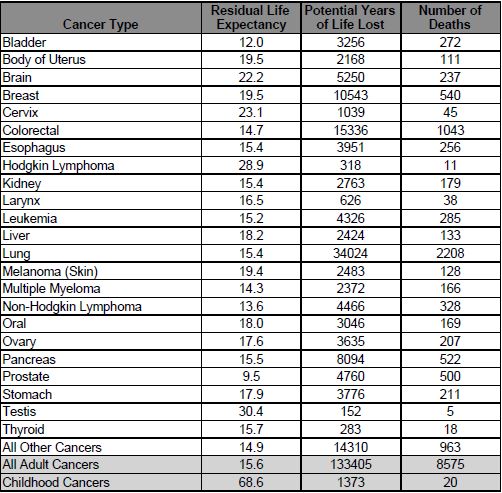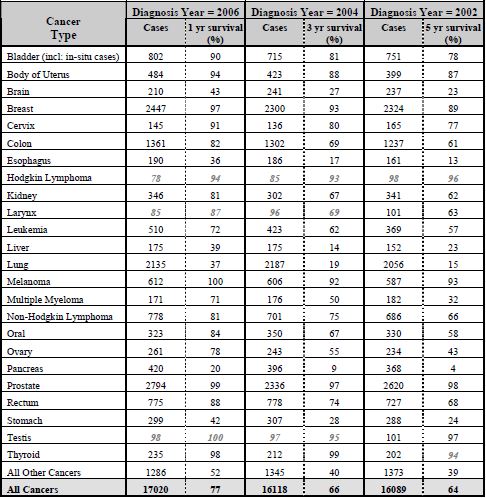Potential Years of Life Lost to Cancer in BC
The official BC Cancer Statistics offer a sad insight into how many lives have been affected–and ultimately lost–to cancer in this province.
The table below represents the statistics of Residual Life Expectancy, Potential Years of Life Lost and Number of Deaths for all cancer deaths reported in British Columbia in 2011. Residual Life Expectancy refers to the average time (in years) these individuals might have lived had they never had cancer. The Potential Years of Life Lost (PYLL) is the sum total of the Residual Life Expectancy rates, seen on the chart below for each separate type of cancer as well as all cancers combined.
As is evident from this figure, some cancers (lung, colorectal) are more lethal than others (thyroid, lymphoma) while others (breast, cervix) have a relatively higher Residual Life Expectancy.
AIM’s Whole Body Scan offers patients a unique opportunity to pinpoint the onset of cancer at its earliest stages. Cancers caught in Stage I have a significantly higher survival rate than those diagnosed in Stage III or IV.
Dr. Attariwala recommends these individuals consider whole body cancer screening:
-Patients over 40; the majority of cancers occur past this age
-Patients with a family history of cancer; these patients are encouraged to have screening done when they are 10 years younger then the age their father/mother/aunt/uncle, etc. was when they were diagnosed
-Smokers or those exposed to second-hand smoke; with 2208 deaths in 2011, casualties from lung cancer were more than double that of any other type of cancer
-Women who suspect that they have cancer; says Dr. Attariwala: “Women who have a feeling that something is wrong should get checked, because most times they’re right!”
For further insight into cancer survival rates in BC, see the table below, which displays the 1, 3 and 5 year rates for adults diagnosed in 2006, 2004 and 2002 respectively.



